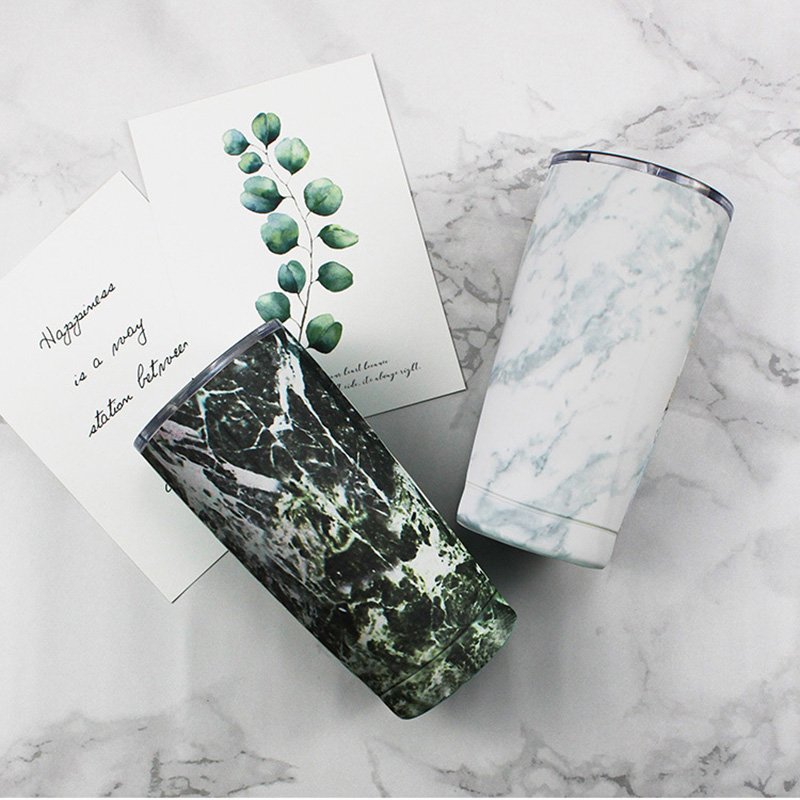Introduction to Tumbler Cups
Tumbler cups have become an increasingly popular choice in various settings, ranging from home kitchens to professional offices and outdoor activities. These versatile vessels are designed to hold a range of beverages, including water, coffee, tea, and even smoothies. Their primary appeal lies in their practicality and the ability to keep drinks at desired temperatures for extended periods.
One of the defining features of tumbler cups is their robust construction, often designed to be spill-resistant with secure lids. They typically come with thermal insulation, which helps maintain the beverage temperature, be it hot or cold. This makes them particularly handy for people on the go, ensuring that your coffee stays warm during a morning commute or your iced tea remains chilled during a hiking excursion.
The materials used in manufacturing tumbler cups vary, catering to diverse preferences and needs. Common materials include plastic, stainless steel, and glass. Plastic tumblers are lightweight and durable, making them a cost-effective option for everyday use. Stainless steel tumblers, on the other hand, are renowned for their superior thermal insulation properties and durability. Glass tumblers are often chosen for their aesthetic appeal and the pure, untainted taste they offer, although they may be more fragile compared to other materials.
Furthermore, the growing emphasis on sustainability has seen an increase in the popularity of reusable tumbler cups, reducing the reliance on single-use plastic bottles and cups. This shift not only benefits the environment but also aligns with the sensibilities of environmentally-conscious consumers. These factors collectively contribute to the widespread adoption and favorability of tumbler cups across various contexts, underscoring their versatility and functionality.
Historical Background of Tumbler Cups
The history of tumbler cups dates back to ancient times when early civilizations began crafting vessels for holding liquids. The initial iterations of these cups, found in archaeological sites, were simplistic and utilitarian in design. Their evolution over centuries signifies both functional improvements and artistic advancements. During ancient Roman and Greek periods, tumblers were typically made from materials like wood, ceramic, and metal. They featured a flat bottom, which was a notable departure from the stemmed goblets that were prevalent in those eras.
The etymology of the term ‘tumbler’ is believed to have intriguing origins. Historically, the ‘tumbler’ was designed with a rounded or convex bottom, encouraging the tumbler cup to tip over and ‘tumble’ if set down too quickly. This unique feature was practical, as it prevented the contents from being left unattended, thereby reducing wastage. Over time, the design evolved for increased stability, transitioning to the flat-bottomed versions we are familiar with today. The name, however, persisted and eventually became synonymous with cups used for drinking.
Diverse cultures have influenced the design and utility of tumbler cups. In medieval Europe, they were crafted from horn and pewter, showcasing a blend of accessibility and durability. Meanwhile, in Asia, delicate tumbler cups made from porcelain and lacquer became symbols of sophistication and artistic expression. As trade routes expanded and globalization ensued, the exchange of craftsmanship and design philosophies led to a more standardized understanding of what a tumbler cup is.
In modern times, the development of materials such as glass, plastic, and stainless steel has further diversified tumbler cups. They are now ubiquitous, found in myriad shapes, sizes, and functionalities, reflecting both cultural heritage and modern innovations. The historic journey of tumbler cups from ancient utilitarian objects to contemporary staple drinking vessels underscores their enduring relevance and adaptability.
Why They Are Called Tumbler Cups
The name “tumbler cups” is steeped in historical significance, tracing back to intriguing designs and practical utility. Originally, these cups were crafted with a bottom-heavy structure, which played a pivotal role in their nomenclature. When tilted, the weight distribution caused the cup to right itself automatically rather than spill its contents, leading to the term “tumbler.” This unique feature not only contributed to the name but also made the cups highly convenient for use in settings where stability was paramount, such as on moving ships or during feasts.
Numerous theories and anecdotes have been posited to explain the origin of the term. One prominent theory suggests that tumbler cups were initially designed with rounded or weighted bottoms that prevented them from staying tipped over. This deliberate design ensured that when the cups were knocked or nudged, they would ‘tumble’ back into an upright position. Another theory links the name to the practice of “toasting,” where individuals would physically clink and sometimes tip their cups during celebratory occasions. The robust design of tumbler cups facilitated this practice while minimizing spillages.
Adding to the rich tapestry of tumbler cups’ history are the variations and evolutions of these drinking vessels. In the 17th century, for instance, the term “tumbler” came to describe a type of glass with a flat bottom, diverging from the original bottom-heavy design but retaining the name due to its widespread recognition. This evolution reflects both technological advancements and changing preferences in drinking habits.
Overall, the name “tumbler cups” encapsulates centuries of design ingenuity and cultural practices. Whether derived from practical considerations or social customs, tumbler cups remain an enduring testament to the interplay between form, function, and history, continuing to be a popular choice for modern-day use.
Modern Usage and Varieties of Tumbler Cups
In today’s fast-paced world, tumbler cups have become indispensable for many. Their versatile design and utility make them suitable for various daily activities, ranging from morning coffee runs to evening gym sessions. One of the key benefits of tumbler cups is their exceptional portability, allowing users to carry their favorite beverages wherever they go without hassle. This convenience is complemented by their insulation properties, which keep hot drinks hot and cold drinks cold for extended periods.
Tumbler cups are designed to cater to individual lifestyles and preferences. Many tumblers come equipped with advanced technologies, such as vacuum insulation, which creates an airtight seal to maintain the beverage’s temperature. This feature ensures that a refreshing iced drink remains chilled on a hot summer day, while a piping hot coffee stays warm during a cold winter morning. Such versatility highlights why tumbler cups remain a popular choice among users of all age groups.
The market is saturated with various styles and designs of tumbler cups, accommodating aesthetic preferences and functional needs. Customizable tumblers allow individuals to add a personal touch, making them excellent gifts or promotional items. Additionally, eco-conscious consumers can opt for environmentally friendly options made from sustainable materials like stainless steel or BPA-free plastics, reducing their carbon footprint while enjoying their beverages.
Durability is another hallmark of modern tumbler cups. Most tumblers are crafted from robust materials, ensuring they can withstand everyday wear and tear. This longevity not only provides excellent value for money but also contributes to a reduction in single-use cups, supporting environmentally responsible habits.
When choosing a tumbler cup, it’s essential to consider one’s specific needs and preferences. Factors such as size, material, insulation technology, and additional features like spill-proof lids should be taken into account. By evaluating these elements, users can select a tumbler cup that seamlessly fits into their lifestyle, offering both functionality and style.




Zwischen fünf und 1.000 Euro kann der Spieler setzen, geöffnet haben die Tische täglich ab 15.00.
Das beliebte Kartenspiel Black Jack wird an drei Tischen gespielt.
Der Spieler kann täglich zwischen 15.00 und 04.00 Uhr sein Glück beim Roulette versuchen. An drei Tischen wird das Französische Roulette gespielt, die Spieler sitzen am Tisch und die
Croupiers platzieren die Jetons für ihre Gäste.
In direkter Nähe der Spielbank Esplanade in Hamburg befinden sich zahlreiche Hotels und Pensionen. Konzerte mit Künstlern werden zum Beispiel fast monatlich geboten.
Seit 1977 setzt diese Hamburger Institution den Standard für
authentische europäische Unterhaltung und bietet Live-Tischspiele,
professionelle Pokerturniere und erstklassige Gastfreundschaft.
Aufgrund der direkten Nähe zum Hauptbahnhof Hamburgs, empfehlen wir
Ihnen die Anreise mit den öffentlichen Verkehrsmitteln. Unser Parkhaus
ist von 12–4 Uhr für Sie geöffnet und befindet sich direkt neben der Spielbank.
Im Stephansplatz Casino in Hamburg findest du eine breite Auswahl
an Casinospielen. Der Bereich für das Automatenspiel öffnet täglich von 12 bis 4 Uhr.
Im Cash Game wird täglich im Esplanade mit unterschiedlichen Limits an mehreren Tischen gespielt.
Bei einem Startgeld von zehn Euro und einem Buy In von 100 Euro
ist das Event auch für Hobbyspieler bestens geeignet.
Im Herzen der Stadt, direkt am Stephansplatz, ist das Unternehmen gut aufgestellt für die
2001 um 15 Jahre verlängerte Konzession zum Betrieb des
staatlich konzessionierten Glücksspiels.
References:
https://online-spielhallen.de/500-casino-erfahrungen-eine-umfassende-bewertung-aus-spielersicht/
Neukunden erhalten über den Löwen Play Promo Code 100% bis zu
100€ sowie bis zu 150 Freispiele für Book of Ra Deluxe. Dabei handelt es sich um
einen Veranstalter von virtuellen Automatenspielen. Für deutsche Spieler bietet Casumo dafür eine mobil optimierte Web-App,
die in allen Casumo Testberichten durch einfache Bedienung und schnelle Ladezeiten überzeugt.
Egal, ob Sie Lust auf geselliges Beisammensein haben oder einfach nur
Echtzeit-Action genießen möchten, dieser Teil des Casumo Deutschland
Casino Online wird Sie nicht enttäuschen. Der Einstieg ist einfach,
schnell und leicht. Und wenn Sie einfach nur ein Gefühl für sie bekommen möchten, können Sie die meisten sogar zuerst im Demomodus ausprobieren — kein Druck.
Sie platzieren eine Wette, erhalten zwei Karten und raten, ob eine dritte dazwischen fällt.
Red Dog – das ist nicht sehr verbreitet, aber es macht Spaß und ist einfach.
Es ist einfach, es in Angriff zu nehmen (versuchen Sie einfach, so nah wie möglich an 21 heranzukommen, ohne darüberzugehen),
aber es gibt genug Strategie, um die Dinge interessant zu halten.
References:
https://online-spielhallen.de/tipico-casino-login-ihr-einfacher-zugang-zur-casinowelt/
Im Vergleich zu anderen Online Casino Anbietern, die oft mehrere Tage
benötigen, bieten wir Ihnen eine effiziente Lösung, um
Ihre Auszahlungen schnell und unkompliziert zu verarbeiten. Bei Verde
Casino bieten wir eine breite Auswahl an Zahlungsmethoden, um
Ihnen eine bequeme und sichere Einzahlung sowie Auszahlung zu ermöglichen. Mit der Verde Casino
App profitieren Sie von exklusiven Boni und Online Casino Echtgeld-Angeboten, die nur für unsere mobilen Nutzer verfügbar sind.
Als führendes Casino Online in Deutschland und Österreich garantiert Verde Casino,
dass Sie ein echtes Online-Casino-Erlebnis auf Ihrem Mobilgerät erhalten. Egal, ob Sie ein erfahrener Spieler oder neu im Casino Online sind, unser Live-Casino bietet Ihnen spannende Unterhaltung und attraktive Gewinnchancen. Unser Live-Casino
bietet eine Vielzahl von Spielen, darunter Klassiker wie Live-Roulette,
Live-Blackjack und Live-Baccarat.
Sie können mit dem Casino Einzahlungsbonus neueste Spielautomaten testen und gleichzeitig Geld gewinnen.
Der Willkommensbonus ist eine Methode, um neuen Spielern zu danken, dass sie sich für Verde Casino entschieden haben. Im Jahr 2025 bieten wir eine Reihe von verschiedenen Casino
Boni an, über die wir Ihnen jetzt mehr erzählen wollen. Dazu gehört in der Regel ein Willkommensbonus, wöchentliche oder
monatliche Promotionen, ein VIP Programm und vieles mehr. Heutzutage muss jedes Casino eine Vielzahl verschiedener Boni anbieten, um
wettbewerbsfähig zu bleiben. Sie müssen einfach mit
dem Mauszeiger über das Spiel Symbol fahren und auf “Demo” klicken.
Jede Woche erhalten Spieler einen neuen Bonus, dessen Höhe an das Treueprogramm
geknüpft ist. Obendrein erhalten aktive Spieler im Rahmen des Treueprogramms sogar ein Geschenk zum Geburtstag.
Bereits beim Willkommensbonus zeigt sich das Verde Casino sehr großzügig.
References:
https://online-spielhallen.de/ihr-umfassender-leitfaden-zum-hit-spin-casino-bonus-code-und-alles-was-sie-wissen-mussen/